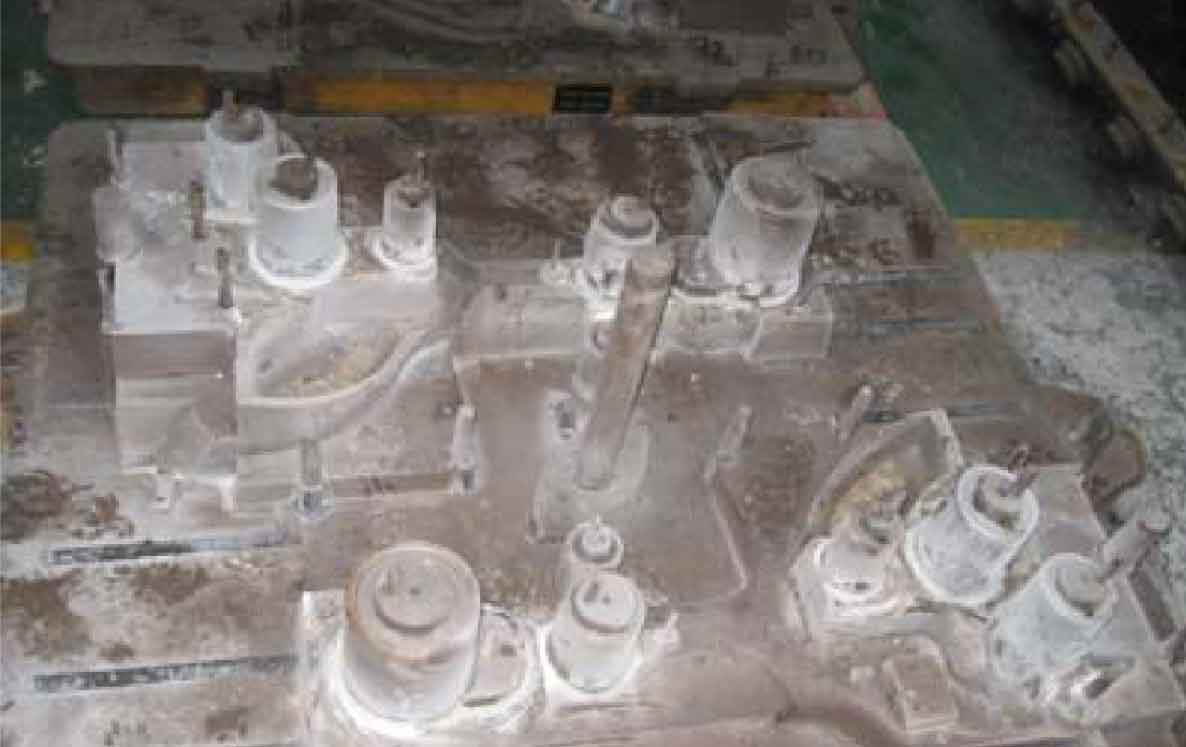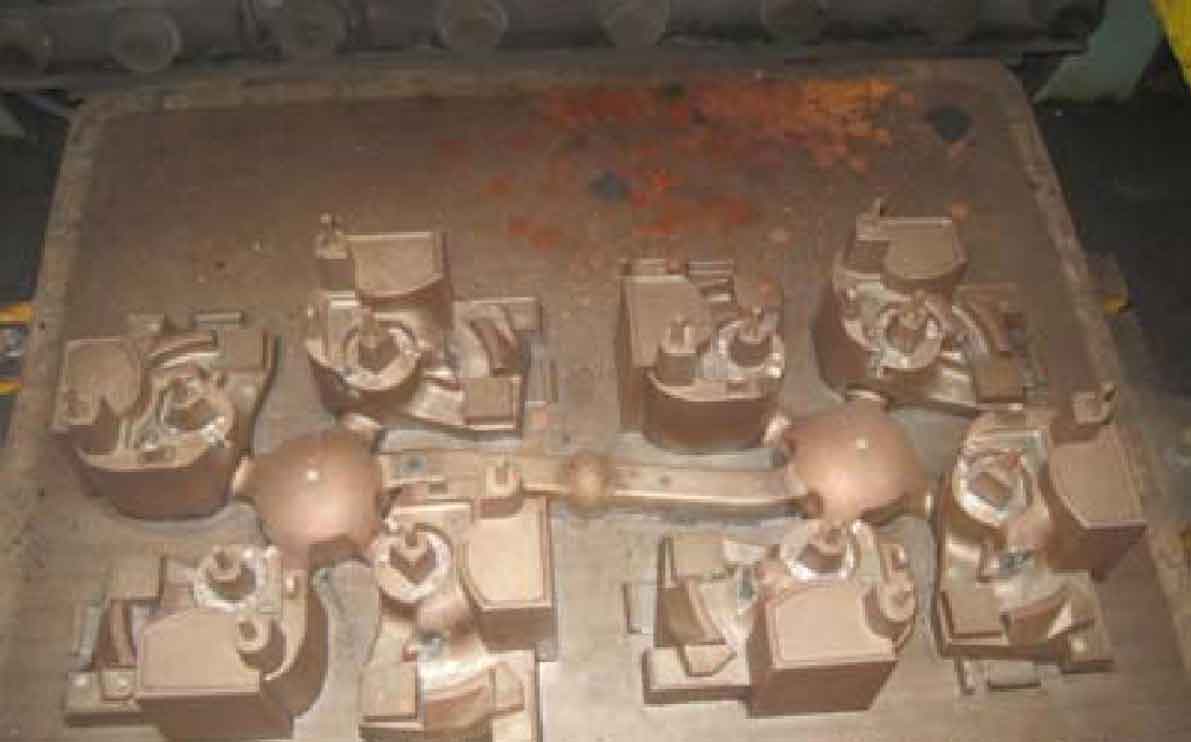The position of the riser at the hook body part of the hook body is improper, and the feeding effect is general. The position needs to be adjusted. The hook body at the gate solidifies late, and there are a few shrinkage defects in the cutting section. A small concealed riser is set near the gate to strengthen the feeding. The pin hole of the hook tail cannot pass through the template, and the overall dimension of the hook body part is too large. The mold model must be modified. The root of the hook body pouring riser Cracks still occur at the corners of the hook body and the hook head and at the corners of the complex surface inside the hook head from time to time, which is related to the non-standard pouring and riser cutting, root cleaning and welding repair process. The sand casting process scheme is basically determined after being revised again according to the above, and the causes of the above defects and the improvement measures to be taken in the process of batch production are introduced in detail. Figure 1 shows the final sand mold casting process scheme for the trial production of coupler body, which is used as the process scheme for mass production in the early stage.

The size of the coupler knuckle guard pin boss is inaccurate and cannot pass through the rotary template. The mold must be modified. The slag and sand inclusion defect at the coupler knuckle pin hole has been improved, but it still occurs occasionally. There is also a slight sand inclusion on the upper surface of the pin hole at the head of the coupler knuckle, which must be cleaned without welding repair. There is mechanical sand sticking on the inner wrist surface of the coupler knuckle from time to time. It can be considered to brush anti sand coating on the root of the gate, the middle and upper part of the inner wrist surface of the coupler knuckle, and the opening of the coupler knuckle The occurrence probability of microcracks at the corner of the guard pin flange is reduced and still occurs occasionally. The causes of the above defects and the improvement measures to be taken in the process of mass production are analyzed in detail later. Figure 2 shows the final sand mold casting process scheme for the trial production of coupler tongue, which is used as the process scheme for batch production in the early stage.
The main production process and equipment used in the trial production of hook body and hook tongue are mature, advanced and reliable. The sand casting process scheme is continuously improved, and finally can be basically determined to serve mass production. After the appearance, geometric dimension, flaw detection and compactness inspection, the steel castings of 16 / 17 coupler produced in trial production meet the requirements of TB / t456-2008 and steel castings drawings, and the trial steel castings have passed the ton drawing, hardenability and material tear test. It has successfully passed the company level appraisal and the ministry level appraisal of the Ministry of railways, indicating that Tongling branch of Changjiang Rolling Stock Co., Ltd. has the ability to mass produce 16 / 17 couplers.

